
On Twitch, You Can Never Log Off
The demands of daily livestreaming are driving creators to rethink the benefits of Twitch fame
December 6, 2022
In October 2022, popular streamer Sweet Anita posted a message in her Discord community and then to Twitter: she needed to take a break from Twitch. “I’ve been pushing through everything and turning up to stream, drinking sometimes to reduce the discomfort on stream,” she said. “I’ve been scared to take days off.” While live with some of her 1.9 million followers on Twitch, she was personable and affable, discussing her Tourette's Syndrome or providing commentary on viral videos. On Twitter, she posted humorous quips to her 378,900 followers, and on Discord she interacted regularly with her nearly 38,000 community members. But behind the scenes, she was struggling.
Sweet Anita is not the only creator turning away from Twitch because of the pressures of live streaming and the demands dictated by success on the platform. Littlesiha and Ninja announced their own breaks from Twitch, either extended or short-lived. In July 2022, popular streamer Pokimane revealed she would take time off, pausing near-daily appearances on Twitch and halting production of content across social media. When she returned online two months later, she expressed appreciation for her community in a heartfelt video but noted she would stream less frequently on Twitch going forward.
Among many reasons for her choice, Pokimane cited the challenges of being exposed to a constant feedback loop and a desire to live life beyond extended daily streams. “There's such a pressure on streamers to follow every trend, to capitalize on viewership, to stream longer than the guy next to them or the guy that they share similar viewership with,” she said in the video, discussing her seven years of streaming on Twitch. “It's just a hyper competitive industry.”
That competitiveness on the platform extends both to larger streamers maintaining their dominance to smaller streamers finding their footing (and an audience). For the former group, it’s not uncommon to see streamers live with their audience for over 40 hours a week. For the latter group, which includes mostly part-time creators juggling work or school, streaming can start as a passion project and turn into a time-consuming obligation.
Creator burnout is rampant across all platforms. In part, this is the work of the platforms and the monetary and algorithmic incentives they attach to creating content. TikTokers have revealed the burnout that arises from keeping up with platform trends while navigating the online harassment that comes with virality, while YouTubers are compelled to stick with a regular upload schedule, mimicking television programming. On Instagram, creators are incentivized through bonuses from Meta to expand their content to formats like Reels, using all aspects of the platform to get the most visibility.
But on Twitch, where discoverability is a challenge when you’re offline and your hours spent streaming each month are tightly coupled with your earnings, burnout can be especially common for streamers staying live to stay relevant. Popular streamer and YouTuber Chris Melberger pointed to the catch-22 of it all—taking a week off Twitch or changing your schedule means curtailing growth; refusing to do so means burnout.
It’s not just the platforms that apply pressure to creators. Fans, often developing parasocial relationships with the people they watch live for hours each day, can keep creators on a content hamster wheel. Every platform has its own unique ways of creating a sense of intimacy between creators and their followers. On Twitch, it’s the straightforward approach of creators spending endless hours live on camera, and directly interacting with fans in chat, that creates these bonds.
Across a broad range of streamers—gamers, dancers, political commentators, or those “just chatting”—it’s common to spend eight, 10, or 12 hours per day on stream. Some streamers attempt 24-hour streams—sometimes in near continuous conversation, sometimes sleeping. Twitch streamer Emilycc has been on stream 24-hours a day for over a year, setting a record on the platform. This level of commitment is what many fans have come to expect and how streamers make their money, endlessly entertaining fans live on camera, trading their personalities for subscriptions. Even after revealing the weight of burnout, streamers who find their revenue plummeting when they take any time away often return to the platform. On Twitch, you can never log off.
How Twitch incentivizes logging—and staying—on
Despite the dream of making a living on Twitch—playing video games or talking to your virtual friends live—the creator economy tends to follow a power law. Most of the resources, money, and fans in the ecosystem are accrued to a small number of creators. In a 2021 leak of Twitch’s user data that included creator payouts, it was revealed that from August 2019 to October 2021, the top 100 streamers on the platform made anywhere between $9,626,712.16 and $886,999.17.
According to an analysis from the Wall Street Journal, the top 1% of Twitch streamers made over 50% of all money paid out by the platform in 2021. Furthermore, just 5% of users had made over $1,000 in the same year. Only 0.06% had made over the U.S. median household income of $67,521. In a survey of 5,000 community members composed of smaller Twitch streamers, Stream Scheme found that 76% were not able to reach Twitch’s $100 minimum payout threshold. Most others were making between $25-130 per month on the platform.
Making a sustainable living on Twitch means having a sizable audience of subscribers who pay a monthly fee to support your content. Often, getting there means spending an absurd number of hours online, trying to be noticed, playing popular games and following the trends of the platform. To ramp up and reach a level of popularity requires dedication—and once a following is established, streamers risk losing subscribers if the time they spend streaming decreases.
Justin Scannello, known as Scann online to his followers across Twitch, has amassed over 18,000 followers who tune in to watch him play “MLB The Show”—a Major League Baseball video game series. His subscribers ask him questions about the game or follow along to hear him discuss the New York Yankees. He started streaming in college for fun every day in his free time after class. But soon enough, he started trying to make his hobby his job. Since 2021 he has made enough money on Twitch—and across other platforms like YouTube and TikTok—to become a full-time creator.
That journey has not been without its setbacks. “Once I began to grow, I shifted my focus to expanding on an audience and building a community. It became a lot more work to deal with managing a chat and also providing entertaining content,” says Scannello. “As time has gone on, my drive to stream gets less and less, especially when I realize the time that goes into it.”
The demanding nature of Twitch has stood out. “As someone who has diversified their content on multiple platforms, I've learned that Twitch is a space that requires a lot of time to commit,” says Scannello. “Many of the biggest creators on the platform stream daily. Even in our community on Twitch, the biggest creators usually stream over four hours every day during the peak of the game's viewership, alongside making other content on other platforms.”
Compared to other platforms, Twitch generally requires more from its creators because of the structure of the platform and its focus on live streaming. On YouTube, as creators grow, they can often outsource work. It’s not uncommon for large YouTubers to have filming, editing, and uploading staff, leaving them to focus on on-camera presence and creative direction. Videos generally don’t exceed an hour in length, and are typically much shorter. Once a video is uploaded, it’s delivered to subscribers’ feeds, but can also be discovered through YouTube search—now the third most popular search engine in the United States. A YouTuber can create a video once and earn money from it indefinitely through ads. This doesn’t factor in deals that YouTubers—big and small—can make from sponsorships with brands.
On the other hand, Twitch streamers have to be live on the platform to be found. There’s nothing you can outsource when subscribers expect to watch and interact with you on camera. Streamers spend hours online at a time to maximize concurrent viewers and increase their visibility, a seemingly necessary component of streaming due to poor discoverability on the platform. It’s also a necessary aspect of generating ad revenue; streams do not earn ad revenue on replays when a creator is offline. Partnership agreements with Twitch or brand deals with other companies are generally out of reach for small streamers, so most rely on existing subscriptions from supporters to make money and new subscriptions from live viewers to increase their earnings. All these factors drive streamers to spend more time live on camera.
Twitch also offers incentives for creators to run ads on their streams—they pay you more to run ads the higher your viewership climbs, like other platforms. But they also pay more for ad runs based on the time you’ve spent streaming in previous months, leading gamers and other entertainers to maintain a high level of streaming month-to-month to maximize their offers. Scannello notes that taking breaks from the platform negatively impacts your future income through the program. One month he received an offer of $1,093 incentive to run 10 minutes of ads per hour and stream 85 hours in a month. After taking a break from streaming and then returning, the dollar value of his highest offer had plummeted to $182. Scannello believes this structure is a big part of the specific strain of creator burnout on the platform.
“Twitch is unique since you always witness it live. You have to be constantly on camera, interacting with people, and at your setup to grow. On other platforms, you may spend a lot of time on a video, but you can still have your content discovered when you personally are not on the platform,” says Scannello. “While streaming is an accessible thing for people and requires less practice to get into, the sheer amount of work you need to do to grow in the space, if you only stream, is a difficult task. Your content is usually only noticed if you are live.”The pressure from parasocial relationships
Before Twitch became the streaming juggernaut it is today, there was Justin.tv. In 2007, the personal 24/7 livestream followed entrepreneur Justin Kan and his life in San Francisco. It was single-character reality TV, before personal vlogging found a foothold on YouTube. Kan went on to expand Justin.tv into a livecasting platform, eventually finding product-market fit in its category for gamers and selling the platform to Amazon in 2014. But the spirit of its original concept—personality-driven shows for committed fans—is still very much alive.
For years the platform was deeply associated with playing video games, but today categories on Twitch like “just chatting”—, where creators simply speak to their audience, often telling intimate stories about their lives—have taken hold. Other streamers dance for hours, occasionally scantily clad on poles. Most streamers have a setup, where they sit in a chair in front of a camera, speaking to their audience and responding to questions and comments filtering through chat. Occasionally streamers will head into the real world, streaming adventures in their city or their travels.
While many online creator platforms blur the line between followers and friends, viewers on Twitch are particularly prone to developing parasocial relationships with the streamers they tune into—often for hours every day. The amount of time streamers are available to fans is exponential compared to creators who post planned and curated content. Streamers engage directly with fans through shout-outs for new subscribers and thank-you messages for big tips. They also respond to questions and comments in the chat, as viewers vie for their attention. Compared to Instagram influencers or Youtube vloggers, Twitch offers an even greater level of perceived intimacy for fans, who are watching you live in your own environment. Anything can happen, and this level of “realness” means fandom on Twitch runs deep.
Fan devotion is a currency in the creator economy that creators cash in. There are few platforms online where you have instantaneous access to a creator, and fans know this. Even if tens of thousands of people are tuning in at once, which is often the case with Twitch’s largest creators, there’s a good chance that your favorite creator will eventually respond to you, if you attend their streams, shower them in attention through tips, ask questions, and leave comments in the chat. Many streamers take the concept of community to the next level, creating Discord servers for their followers. All of this live interaction is not without its costs.
While Twitch incentivizes creators to stream more and more, there’s pressure from fans, too. Many streamers have a “streaming schedule,” the regular hours they are online each day. Fans come to expect this and often react poorly to their favorite streamers taking a break. “There definitely is pressure from subscribers and supporters. If you grow your platform by streaming daily, viewers make time in their daily routine to be live. Especially since you can only be live at a certain time, you only have a certain window to get those viewers’ time in the day. It gets noticed when you're not live one day,” says Scannello. “They notice when you're late from the time you originally planned on being live. This is the side effect of Twitch being very community-based. It's great to have your viewers, in many cases, be very tightly knit with the streamer, but it also adds pressure to it.”
Those expectations manifest in more ways than wanting to monopolize a streamer's time—it can extend to wanting to control their entire life, from what they say to who they date, online and off. In 2022, popular streamer Amourath—famous on the platform for everything from gaming to “hot tub streams”—was live on Twitch when she made the decision to reveal she was in an abusive relationship. On stream, she captured a phone call with her husband and shared text messages between them. He screamed at her, threatened to kill her pets, and revealed having controlling access to her financial accounts. Amarouth revealed that her partner forced her to stream and to keep their relationship a secret. The problem for a subset of her male viewers? For years she had said she was single. Instead of concern about the abuse she shared, many were irate, arguing she had been dishonest to “trick” or “betray” her followers while pretending to be single, coercing them into paying money and spending time on her streams.
Other female streamers have touched on this parasocial dynamic with some of their male fans. In a Twitter post, Sweet Anita revealed that she frequently sees a sizable drop in subscribers anytime she appears with a man on her stream. In another series of tweets, she explains the phenomenon that has frequently kept female streamers truly single or ‘single,’ unable to have a male partner in the public eye:
Male streamers and their paramours are also at risk from overzealous, sometimes criminal fans. Hasan Piker, a popular political Twitch streamer with over 2.3 million followers, has argued that it's impossible (and unwise) for streamers to be candid about their relationships online. “If you’re a Twitch streamer, you just can't ever be open about that sort of shit…people are fucking psychotic, ” he says in a YouTube video. He notes that stalking and doxxing is commonplace in the Twitch community. On YouTube, creators trade off their relationships with “boyfriend tag” videos or “date night” vlogs. On Instagram, creators see more likes on posts with a romantic partner. But on Twitch, where parasocial relationships run deep and dangerous, this is not an option.
Obsessive devotion from fans also comes with another downside: the development of anti-fans, often disenchanted former fans. These audience members can be vocal haters or quiet seethers who sit in live streams, waiting for a streamer to “mess up”—easy to do when you’re on stream for eight hours straight. It’s common for captured clips to go viral on Twitter or be uploaded to r/LivestreamFail on Reddit.
In more serious circumstances, anti-fans can put streamers' lives in danger. While live on Twitch, streamer Nick Frags was swatted—a group of police officers arrived at his residence after a viewer called the police with a fake tip alleging an emergency. Twitch’s most popular streamer, Félix Lengyel (known online as xQc), revealed his move from the United States back to his home country of Canada came after being subject to regular raids from the police due to swatting. He admits he was “genuinely scared [he] was going to die.” Balancing obligations of fans while navigating haters is an exhausting tightrope walk that streamers can face while trying to sell authenticity.
Burnt-out creators are seeking refuge
After popular streamer Pokimane returned from her hiatus, she remained on Twitch in a more limited capacity than before, but opted to explore creating more YouTube videos and posting more on TikTok. Having Twitch as your primary content platform is hard mode for creators. When creators depart from Twitch, often they don’t go offline entirely. Instead, they migrate to platforms like YouTube and TikTok, embracing the creation of short-form content that allows them to connect creatively with fans—albeit from a greater distance—in a way that’s less time consuming and risk-prone. Large creators aim to diversify for additional income, while small creators often need to drive people to their Twitch streams by posting across platforms like YouTube, TikTok, and Instagram. Some streamers have argued this necessity to multi-task and generate content across different platforms is part of what leads to burnout.
“On Twitch, the way that many people grow their audience is in one of two ways. Some stream many hours every day on Twitch and build their audience through streaming very often. In our community, the streamers who are the top few in the game category directory usually get the most viewers, thus making them more discoverable to new viewers wanting to watch content about the game,” says Scannello. “Some other creators make content on other platforms, like YouTube and TikTok, and try to bring those audiences to Twitch. I fall somewhere between those two categories on Twitch, since I create lots of content on YouTube.”
Jasteria, a Twitch streamer with 3,700 followers who describes herself as “a chaotic-cozy variety streamer,”is most well-known for her “Just Dance” videos as part of Team Center Stage, a Twitch team of dancers. She, too, has dealt with burnout, taking a month off to reset this year. “I was struggling to even think about what I wanted to stream each day and found no joy in it,” she says. “As soon as I came back from that hiatus, I felt a huge change and felt refreshed and inspired again to create.” She’s argued that the poor discoverability on Twitch and the necessity to create content elsewhere is part of streamer burnout:
“If you want to stream on Twitch, you NEED to have an external way of bringing in viewers, by diversifying your content elsewhere,” says Jasteria. “TikTok and Instagram especially are all about trends. If you stay on-trend on either of those apps, you’ll have more of a chance of being discovered.”
Twitch hasn’t done much to ease its creators’ concerns. Instead, the platform has further alienated them by taking a greater cut of streamer revenue and operating in a way some say is increasingly driven by profits instead of relationships with creators. This, too, is driving a migration to other platforms. Scannello has found that other platforms feel more sustainable. “I personally have dealt with burnout with Twitch a few times. As I began creating content on other platforms like YouTube, I began to find those platforms a more sustainable and creative way to express myself,” he says. “The issue I have with streaming is finding ways to provide high-value content there. I don't enjoy the creative process of playing a game and chatting with viewers as much as curating a video.”
Despite revealing her struggles around her health and live streaming in October, Sweet Anita remains on Twitch. If she took the break she needed, it wasn’t long or noticeable: her Twitch streaming schedule shows she’s made several streams of 3-6 hours every week through November, including the day after her announcement. From legitimate connections with a community to financial necessity, there are many factors that keep streamers on Twitch despite the risks. Streamers aren’t without agency and have their own reasons for frequently streaming. But it’s also worth considering how both Twitch, and Twitch viewers, force the issue of having to trade one’s life offline for success online.
One of the arguments that has dominated discourse about the creator economy is that it’s advantageous for creators to earn money directly from fans, rather than being beholden to platforms, advertisers, or brand sponsorships. But Twitch shows this pathway leaves much to be desired. When brands sponsor YouTube videos or posts on social media, they have clear expectations, deliverables, and timelines. After a post is up or a video has been sent out, the commitment ends. But when subscriptions drive income, with a supporter behind each one, creators are stuck churning out a steady stream of content, regardless of whether they’re inspired or suffering, or being doxxed, stalked, or swatted by viewers. They stay seated for hours, performing to the camera, for the members that fill their live chat.
This article was edited by Rachel Jepsen.
Find Out What
Comes Next in Tech.
Start your free trial.
New ideas to help you build the future—in your inbox, every day. Trusted by over 75,000 readers.
SubscribeAlready have an account? Sign in
What's included?
-
Unlimited access to our daily essays by Dan Shipper, Evan Armstrong, and a roster of the best tech writers on the internet
-
Full access to an archive of hundreds of in-depth articles
-
-
Priority access and subscriber-only discounts to courses, events, and more
-
Ad-free experience
-
Access to our Discord community

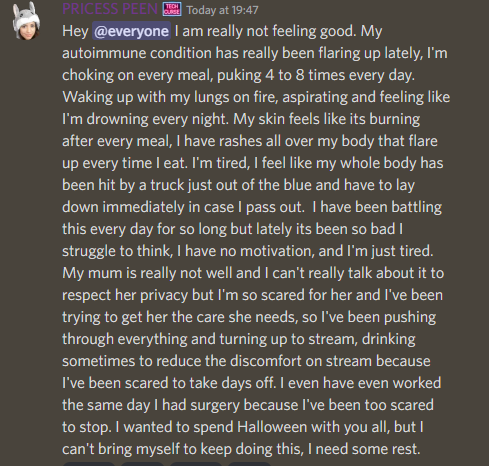
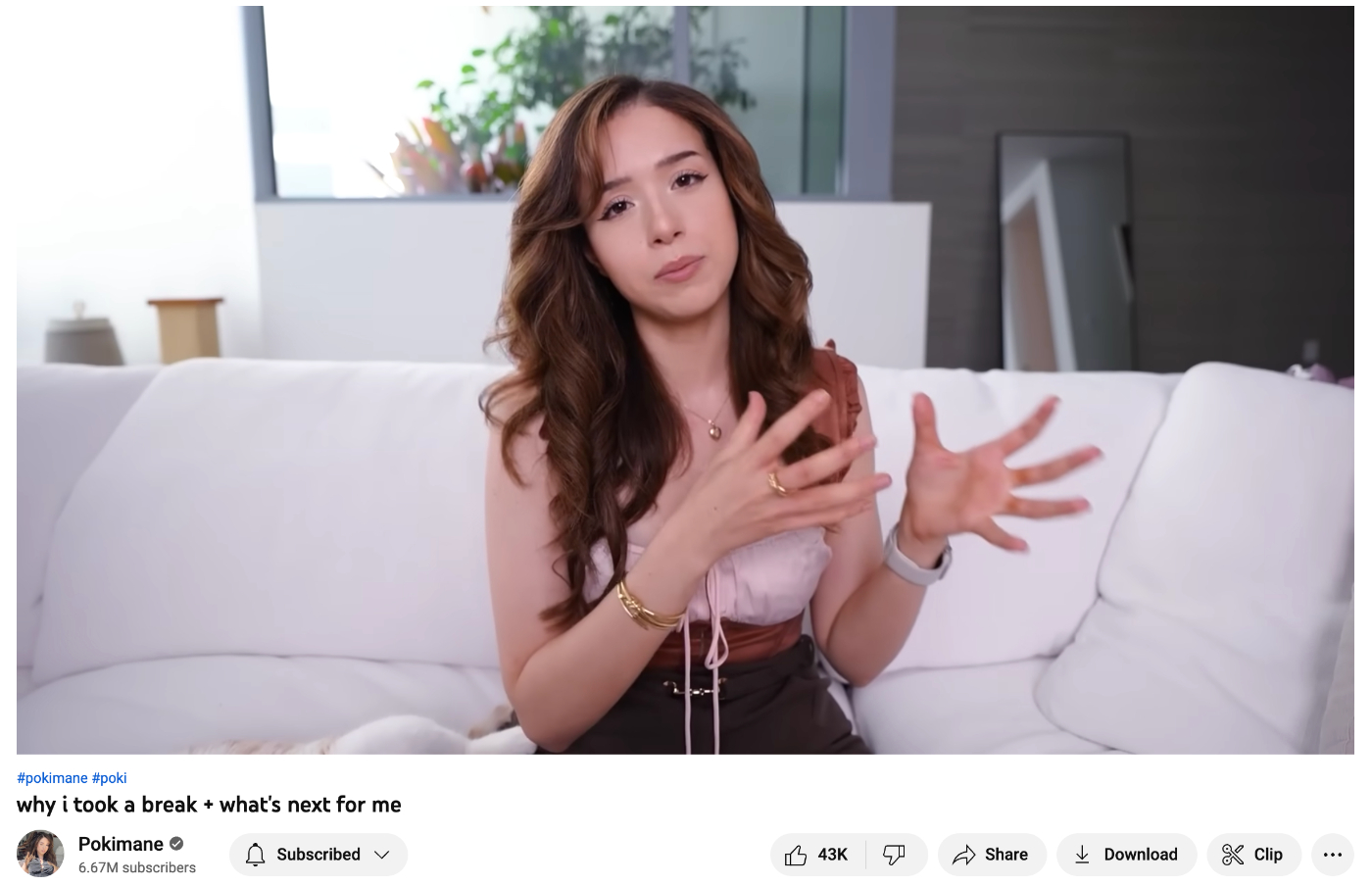

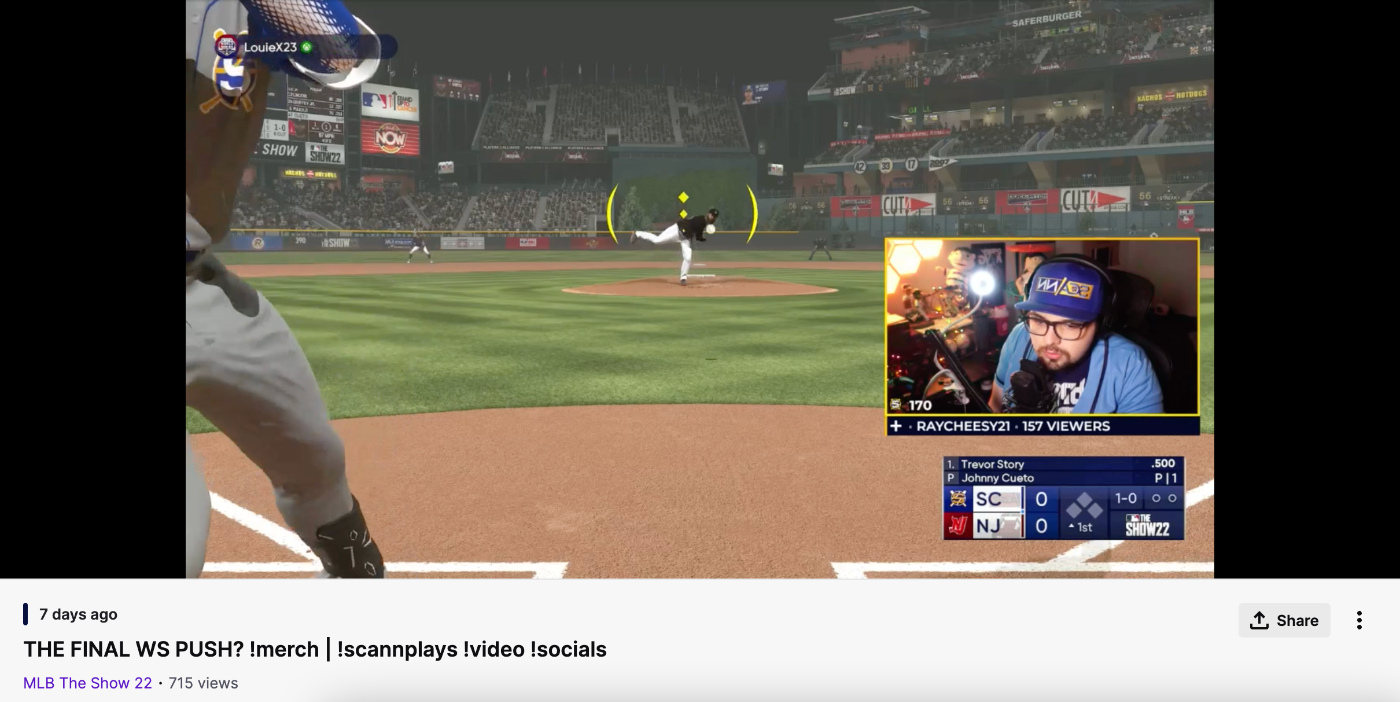


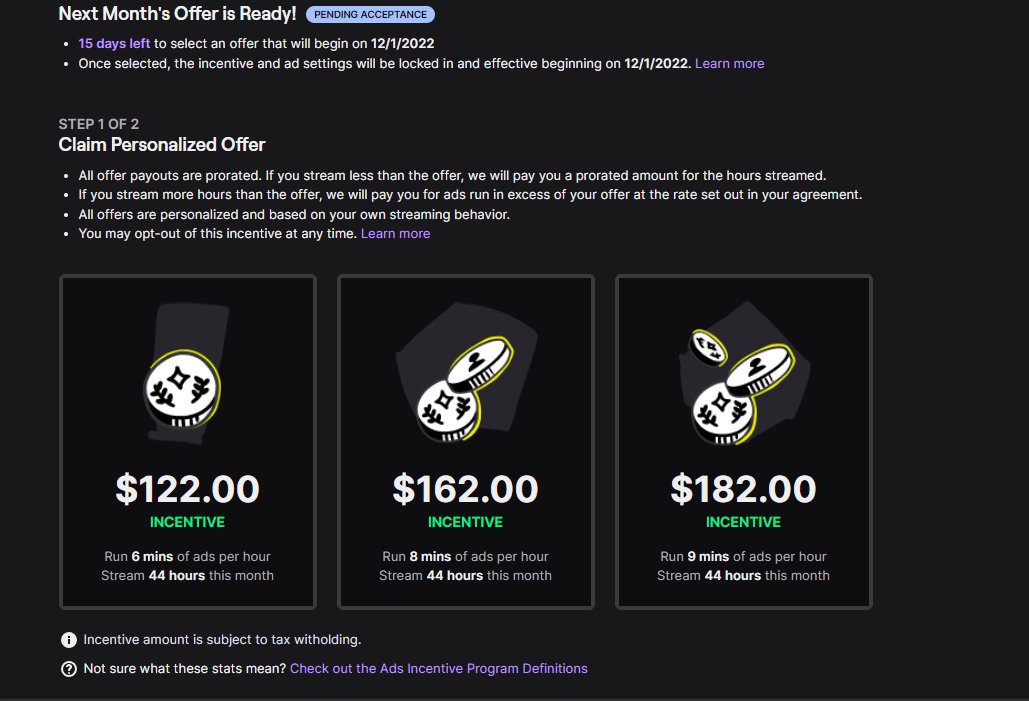




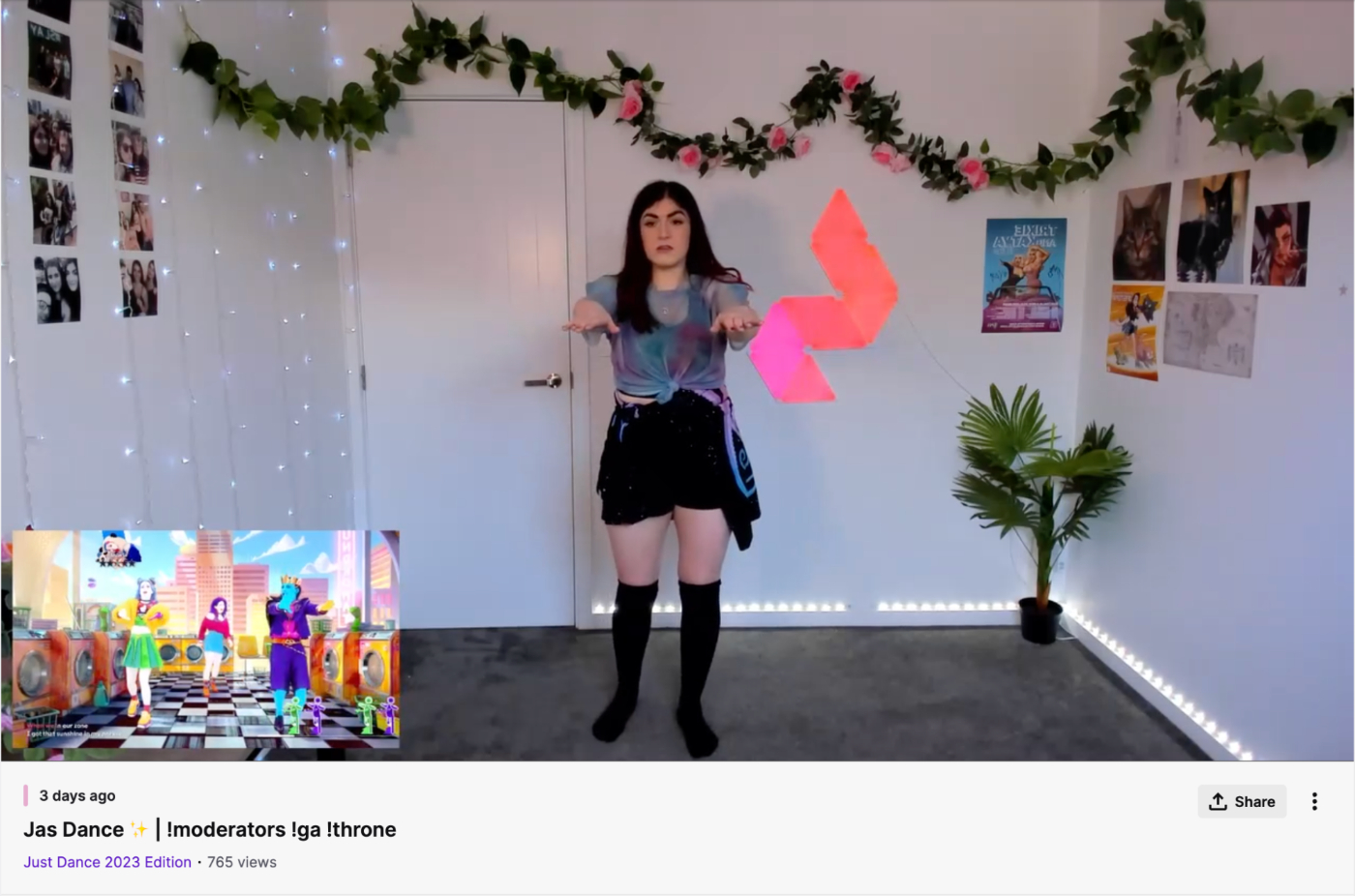


Comments
Don't have an account? Sign up!